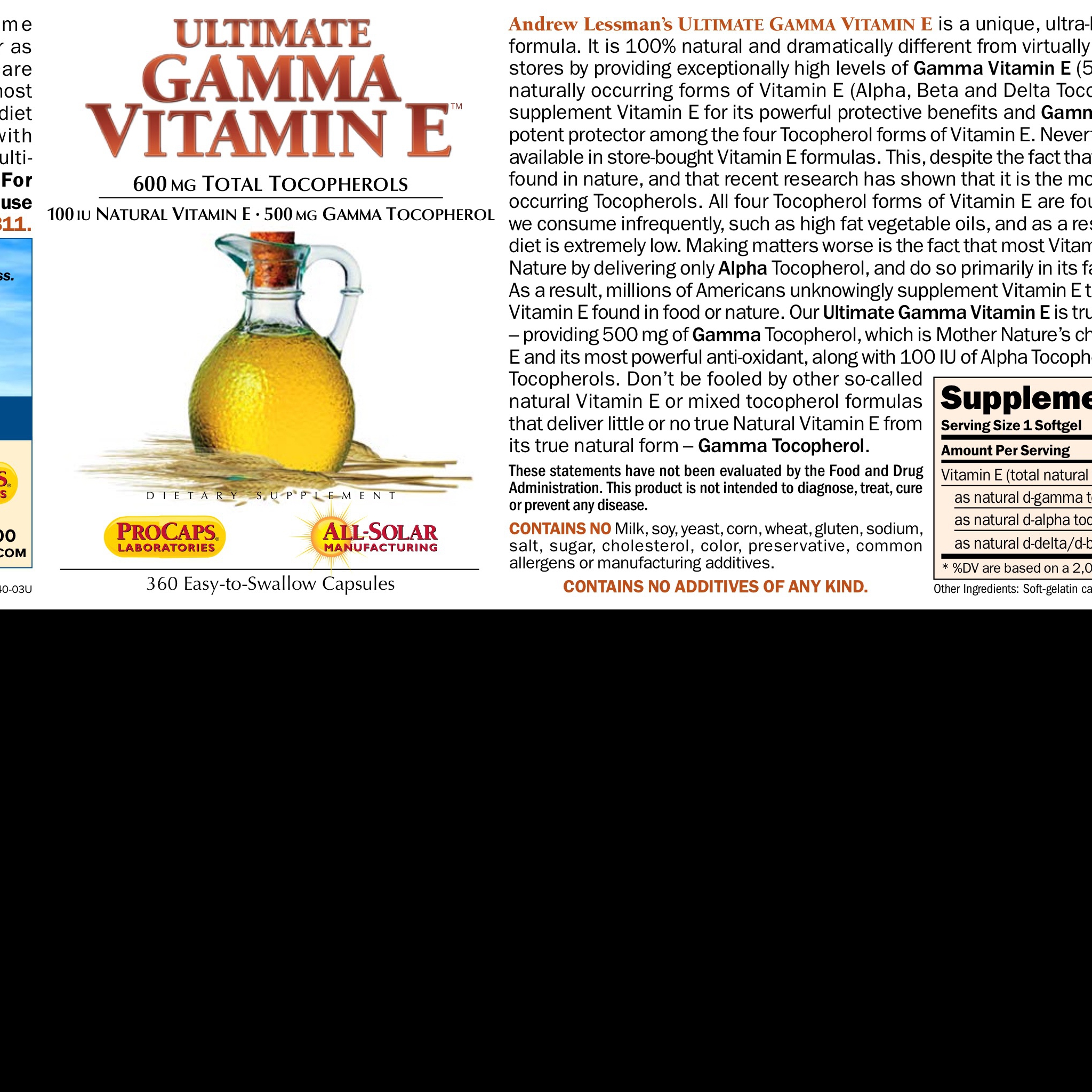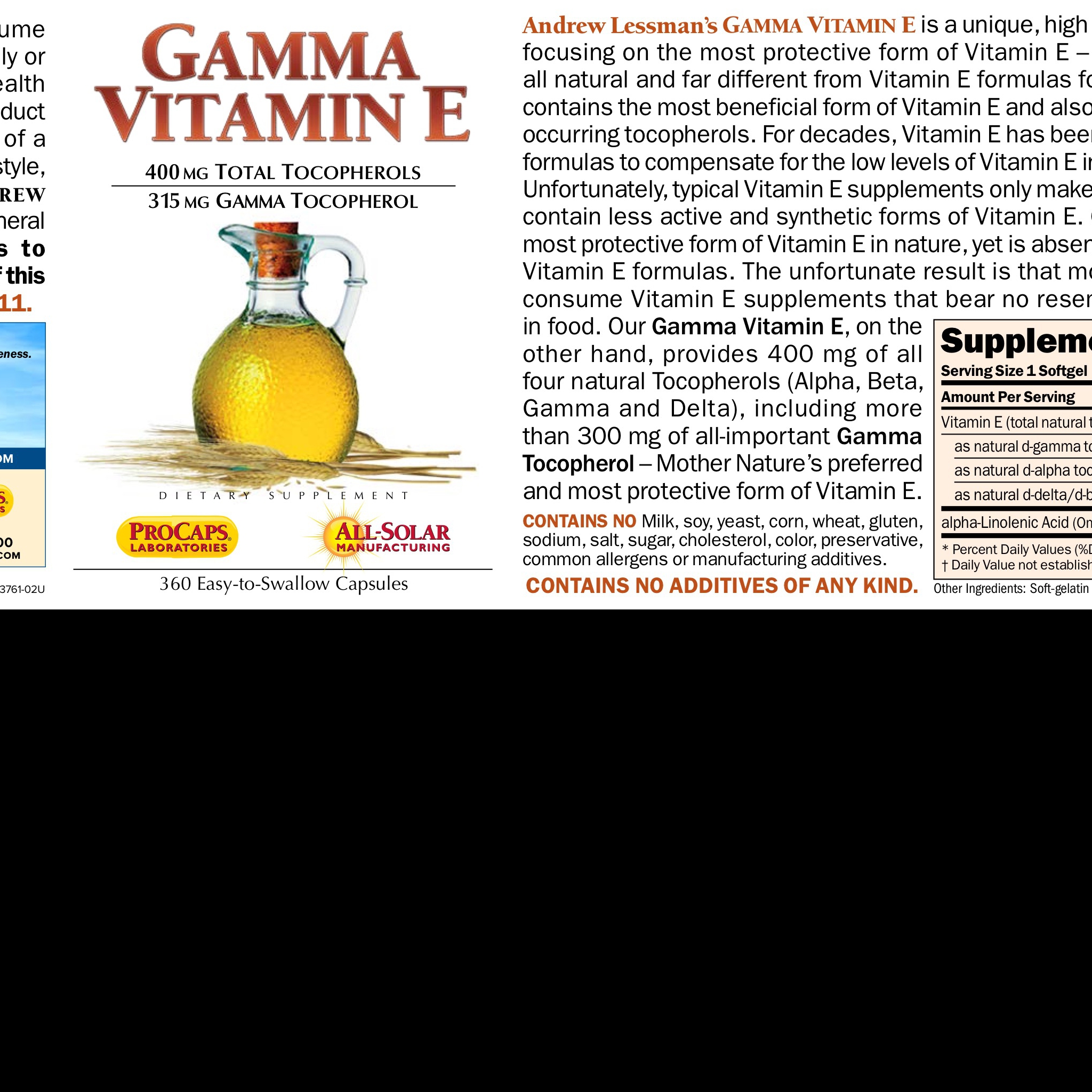Travis
Member
- Joined
- Jul 14, 2016
- Messages
- 3,189
Again with the Soybean oil. I am already staring at various Vit. E bottles every day and they are saying don't take me...
The γ-tocopherol molecule is rather important as it it's been shown to selectively bind and remove both nitrogen dioxide (ṄO₂) and peroxynitrite (ONO₂⁻). It is especially important for smokers and those with cancer, necessarily making it über-important for smokers with cancer. Smoke contains approximately 500·ppm nitric oxide (ṄO). Although this in itself isn't especially dangerous, it has that potential on account of it being the precursor for both nitrogen dioxide (ṄO₂) and peroxynitrite (ONO₂⁻). The most dangerous reactive nitrogen species is generally considered to be peroxynitrite, formed when the superoxide radical (Ȯ₂⁻) adds to nitric oxide (ṄO). Peroxynitrite nitrates proteins at tyrosine side-chains, can cause DNA modifications, and is actually the second substrate for cyclooxygenase besides the notorious arachidonic acid (20∶4, ω−6). There is every indication that two oxygen molecules from peroxynitrite (O=N–O–O⁻) become the endoperoxide ring of prostaglandin H, which is then further differentiated into the carcinogenic prostaglandin E₂ and the immune-modulating and alopeciating prostaglandin D₂. It follows that prostaglandin E₂ will then increase in proportion to the enzymes phospholipase A₂, NADH oxidase, iNOS, and cyclooxygenase-2; all of these are induced by cytokines, and together they assemble the molecular framework necessary for prostaglandin E₂ synthesis: Phospholipase A₂ is responsible for releasing arachidonic acid from the sn-2 position of cell membrane phospholipids; this being an indispensable precursor which will later account for 86.4% of the prostaglandin's mass. The enzyme NADH oxidase is necessary to produce the superoxide radical, an enzyme induced by cytokines with apparent intent of destroying extracellular invaders. But since superoxide can also be created spontaneously near mitochondria and free iron, this enzyme is not obligatory for superoxide generation. Obviously, inducible nitric oxide synthase eponymously produces nitric oxide (ṄO) after being induced; but as also having a constitutional form, this enzyme is not completely necessary for nitric oxide generation. Onto the superoxide ion radical (Ȯ₂⁻) nitric oxide (ṄO) combines (+), forming the second substrate of cyclooxygenase: peroxynitrite (O=N–O–O⁻), which will later go on to account for the 9.1% of the future prostaglandin's mass. Cyclooxygenase is of course the most necessary enzyme as this will finally assemble our two substrates to form prostaglandin H, creating a dioxygen bridge across carbon №9 and №11 of arachidonic acid (formed by two of peroxynitrite's three oxygen atoms). Thus: nitric oxide and superoxide both together are necessary to form, or to actually become, the definitive endoperoxide ring of prostaglandin H; oxygens are added onto cyclooxygenase's other substrate—arachidonic acid—in the cyclicization process which defines that enzyme semantically. All four enzymes induced together would necessarily tend towards higher prostaglandin E₂ synthesis—assuming sufficiently-unwise linoleic acid consumption—although all enzymes besides NADH oxidase appear to have a constitutional forms, always creating their respective products at a lower-levels. But the product of NADH oxidase—superoxide—is constantly being produced spontaneously around mitochondria besides, and especially in one taking iron supplements.
The reduction in cancer incidence reported for 'antioxidants' could be partially explained by reduced superoxide formation; any positive correlations with iron intake could perhaps be explained likewise. But 'antioxidants' as a class are by no means specific and most of them have other functions (i.e. enzyme inhibitors), and these correlations are never as strong as those with γ-tocopherol. This vitamin E subtype has one characteristic function only, and that is to reduce concentrations of nitrogen dioxide (ṄO₂) and peroxynitrite (O=N–O–O⁻) by selectively binding it irreversibly. It also works in its short-tail soluble form, as γ-CEHC, of which is found a tenfold higher urine concentration than is α-CEHC. This increased flux of γ-CEHC through the body can partially explain the lower steady-state serum concentrations of γ-tocopherol despite its higher dietary intake (relative to α-tocopherol). Smokers have lower steady-state levels which increase as a function of time upon cessation, which can only logically be seen as a decreased formation and elimination of nitro-γ-CEHC and nitro-γ-tocopherol due to lower nitric oxide (ṄO) intake. Since peroxynitrite is the second necessary substrate for cyclooxygenase, then the highly-significant reductions in cancer attributed to γ-tocopherol could partially by accounted for simply by reduced prostaglandin E₂ concentrations. This eicosanoid has long been shown in vitro to stimulate cancer proliferations, and it's precursor linoleic acid is the most carcinogenic fatty acid as determined by the sum total of rat feeding experiments (and also human epidemiology).
Methylglyoxal also has one very specific molecular function: this molecule binds with arginine forming hydroimidazalone. Endogenous nitric oxide is created from this amino acid, and methylgloxal would necessarily lower ṄO formation by disabling it (irreversibly forming hydroimidazalone). Lower nitric oxide concentrations translates to lower peroxynitrite concentrations, and this in turn leads to lower prostaglandin E₂ concentations. Reducing nitric oxide, whether a smoker or a nonsmoker, is is probably best achieved through the used of γ-tocopherol (and other ṄO-binders) the aforementioned dicarbonyl.
Of course cyclooxygenase inhibitors inhibit prostaglandin E₂, but this alone does nothing about peroxynitrite (O=N–O–O⁻) concentrations. If prostaglandin formation is seen as a way of detoxifying excess peroxynitrite in the intracellular space by adding it to a lipid, arachidonic acid, then the inhibition of cyclooxogenase-2 could even slightly raise peroxynitrite concentrations. And of course nothing, besides γ-tocopherol, is actually preventing any peroxynitrite molecule—including those being prevented from entering the prostaglandin H pathway by aspirin—from reacting elsewhere: forming spontaneous and random eicosanoids (such as leukotriene-types) by reacting with cell membrane lipids, perhaps creating nitro-tyrosine–proteins, or even causing DNA chain breaks.
Last edited:


